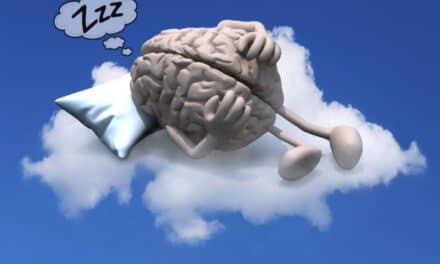Dear Editor:
Drs Haziozlan and Bluemke have written a fine overview of the emerging developments in cardiac MRI.1 Clearly, the radiology community has shown a great willingness to embrace MR scanning with experts enthusing, for instance, that “we are on the brink of another revolution”2 in diagnostic cardiac imaging and that “the issue should be not if, but when” MR angiography will “become an acceptable alternative to the standard, invasive approach?”3? However, emerging trends in cardiovascular medicine may severely curtail the full realization of this powerful imaging tool.
The authors did not deviate from the “conventional wisdom” that the performance of MRI in patients with pacemakers and implantable cardioverter defibrillators (ICDs) remains an “absolute contraindication.”? This position in the radiology community, should it remain, is unfortunate and likely will prove to significantly limit the development of cardiac MRI as a potent imaging modality from a practical perspective.
Over the past several decades, increasingly sophisticated permanently implanted electronic devices have been developed that are used as the standard of care to diagnose and treat important brady and tachyarrhythmic disorders.4 Increasing numbers of these devices are being implanted, with comprehensive data acquired for 1997 showing that over 460,000 pacemaker implants and 38,000 ICD implants were performed worldwide.5-7 Recently expanded indications for pacing in heart failure and the use of ICDs for the primary prevention of sudden cardiac death,4 as well as potentially new device indications,8 highlight the rapidly increasing number of patients who are now and will be treated with device therapy. Perhaps even more troublesome is the development of a “new age of implantable monitors,”9 which may also pose safety concerns in the MR suite.10
It does seem, however, that recent evidence suggests that restrictions prohibiting MRI in patients with implantable pacemakers and perhaps ICDs might be significantly modified in the near future.11
The fact is, well over 200 patients with pacemakers have now been reported in the literature to have been safely scanned, with several large series of patients with devices undergoing MRI having been reported.12, 13 Interestingly, some of the most influential and powerful advocates of the ban on device patients undergoing MRI appear ready to amend this restrictive policy insofar as they have placed their names on peer-reviewed data attesting to the safety of MR in patients with devices.14 Some in the radiology community have published data and concluded frankly that “the general policy of never exposing a patient with a pacemaker to MRI should be revised.”15
While adverse events (including death) have taken place in device patients who have undergone MRI, and these events should in no way be trivialized, what is true is the following: no clinically meaningful irreversible harm has been demonstrated to have taken place when patients with implantable pacemakers or ICDs were carefully monitored during MRI and the device underwent simple reprogramming prior to the scan. Unfortunately, what is painfully clear, particularly to the attending physicians in charge at the time of the patient’s demise, is that each patient who died appears to have somehow entered the MR environment without the staff knowing that the patient had a pacemaker.16
Because of expanding indications, the likelihood of being recommended for an MR procedure during one’s lifetime is increasing. So too is the likelihood that an implantable pacemaker or defibrillator (or some new implantable electronic monitoring device) will be recommended at some time in a patient’s life. Thus, the concerns of device-device interaction are mounting daily in our ever-increasing use of technology in the care of patients. Will patients with implantable devices simply be denied access to MR imaging? If so, the impact of MRI will remain compromised as the very patients who will likely need cardiac imaging will be unable to undergo MRI. As things stand now, I do not envy the radiologist who will have to tell the Vice President of the United States the bad news.
J. Rod Gimbel, MD
Cardiology Associates of East Tennessee
Knoxville
?
References:
- Haziozlan T, Bluemke DA. Cardiac MRI: questions and answers. Decisions in Axis Imaging News. 2003;16(3 suppl):4-6.
- Pohost GM, Biederman RW. The role of cardiac MRI stress testing: “make a better mouse trap.” Circulation. 1999;100:1676-1679.
- Achenbach S, Daniel WG. Noninvasive coronary angiography;”an acceptable alternative? N Engl J Med. 2001;345:1909-1910.
- Gregoratos G, Abrams J, Epstein A, et al. ACC/AHA/NASPE 2002 Guideline Update for Implantation of Cardiac Pacemakers and Antiarrhythmia Devices: A Report of the American College of Cardiology/American Heart Association Task Force on Practice Guidelines (ACC/AHA/NASPE Committee to Update the 1998 Pacemaker Guidelines). Circulation. 2002;106:2145-2161.
- Bernstein AD, Parsonnet V. Survey of cardiac pacing and implanted defibrillator practice patterns in the United States in 1997. PACE. 2001;24:842-855.
- Mond HG. The World Survey of Cardiac Pacing and Cardioverter Defibrillators: Calendar Year 1997;”Asian Pacific, Middle East, South America, and Canada. PACE. 2001;24:856-862.
- Ector H, Rickards AF, Kappenberger L, et al. The World Survey of Cardiac Pacing and Implantable Cardioverter Defibrillators: Calendar Year 1997;”Europe. PACE. 2001; 24:863-868.
- Garrigue S, Bordier P, JP, et al. Benefit of atrial pacing in sleep apnea syndrome. N Engl J Med. 2002;346:404-12.
- Klein GJ, Krahn A, Yee R, Skanes A. The implantable loop recorder: the herald of a new age of implantable monitors. PACE. 2000;23:1456.
- Adamson PB, Magalski A, Braunschweig F, et al. Ongoing right ventricular hemodynamics in heart failure: clinical value of measurements derived from an implantable monitoring system. J Am Coll Card. 2003;41: 565-571.
- Gimbel JR. Implantable pacemaker and defibrillator safety in the MR environment: new thoughts for the new millennium. In: 2001 Syllabus, Special Cross-Specialty Categorical Course in Diagnostic Radiology: Practical MR Safety Considerations for Physicians, Physicists, and Technologists. Oak Brook, IL: RSNA, 2001:69-76.
- Juralti NM, Sparker J, Gimbel JR, et al. Strategies for the safe performance of magnetic resonance imaging in selected pacemaker patients [abstract]. Circulation. 2001; 104(suppl):3020.
- Sommer T, Vahlhaus C, Lauck G, et al. MR imaging and cardiac pacemakers: in-vitro evaluation and in-vivo studies in 51 patients at 0.5-T. Radiology. 2000;215:869-879.
- Martin ET, Coman JA, Owen W, Shellock FG. Cardiac pacemakers and MRI: safe evaluation of 51 patients using a 1.5-Tesla MR system [abstract]. RSNA. 2002.
- Vahlhaus C, Sommer T, Lewalter T, et al. Interference with cardiac pacemakers by magnetic resonance imaging: are there irreversible changes at 0.5 Tesla? Pacing Clin Electrophysiol. 2001;24(4 Pt 1):489-495.
- Avery JE. Loss prevention case of the month. Not my responsibility! J Tenn Med Assoc. 1988;81(8):523.





